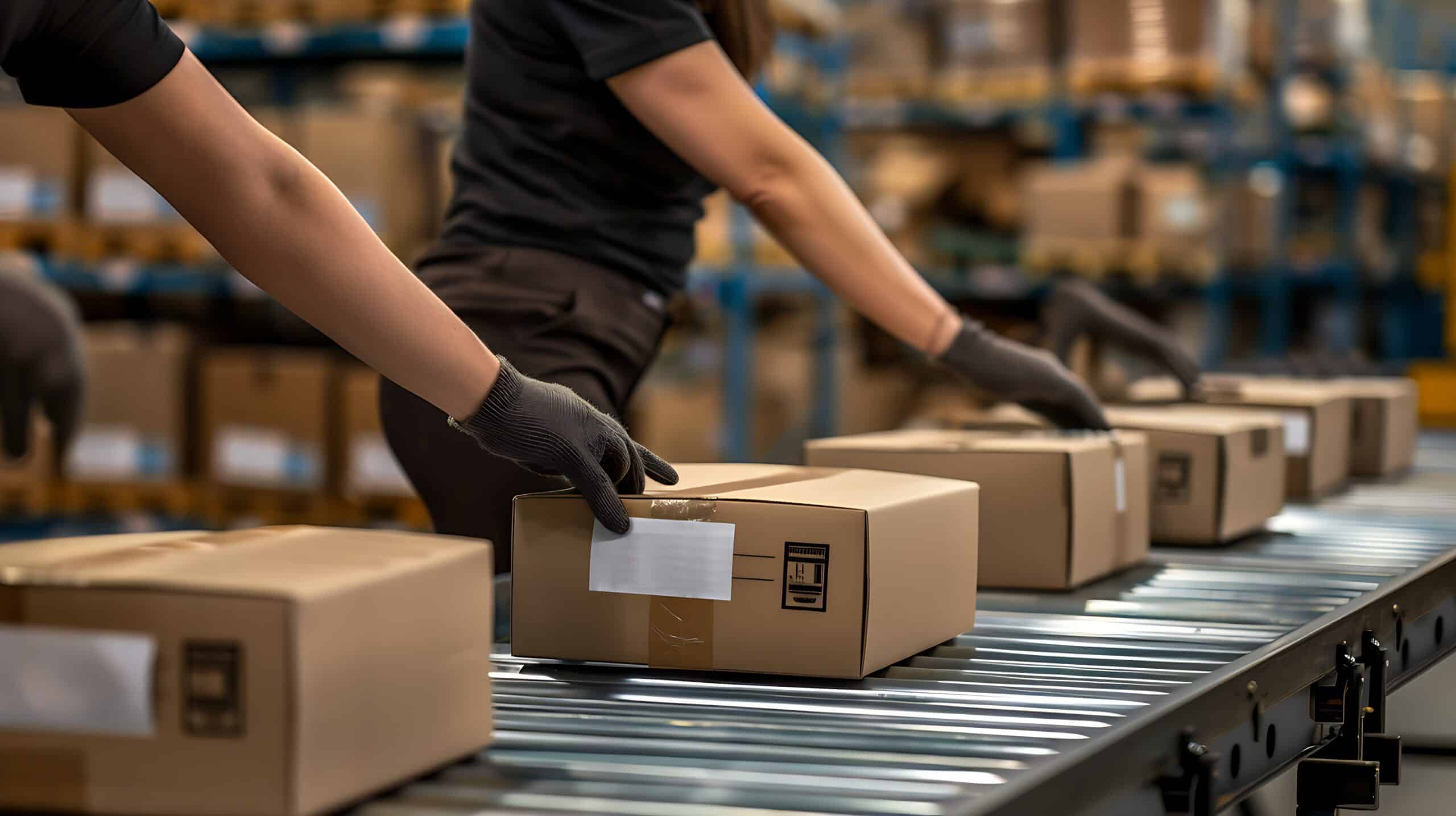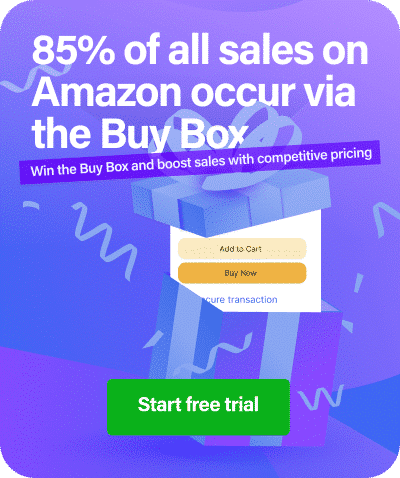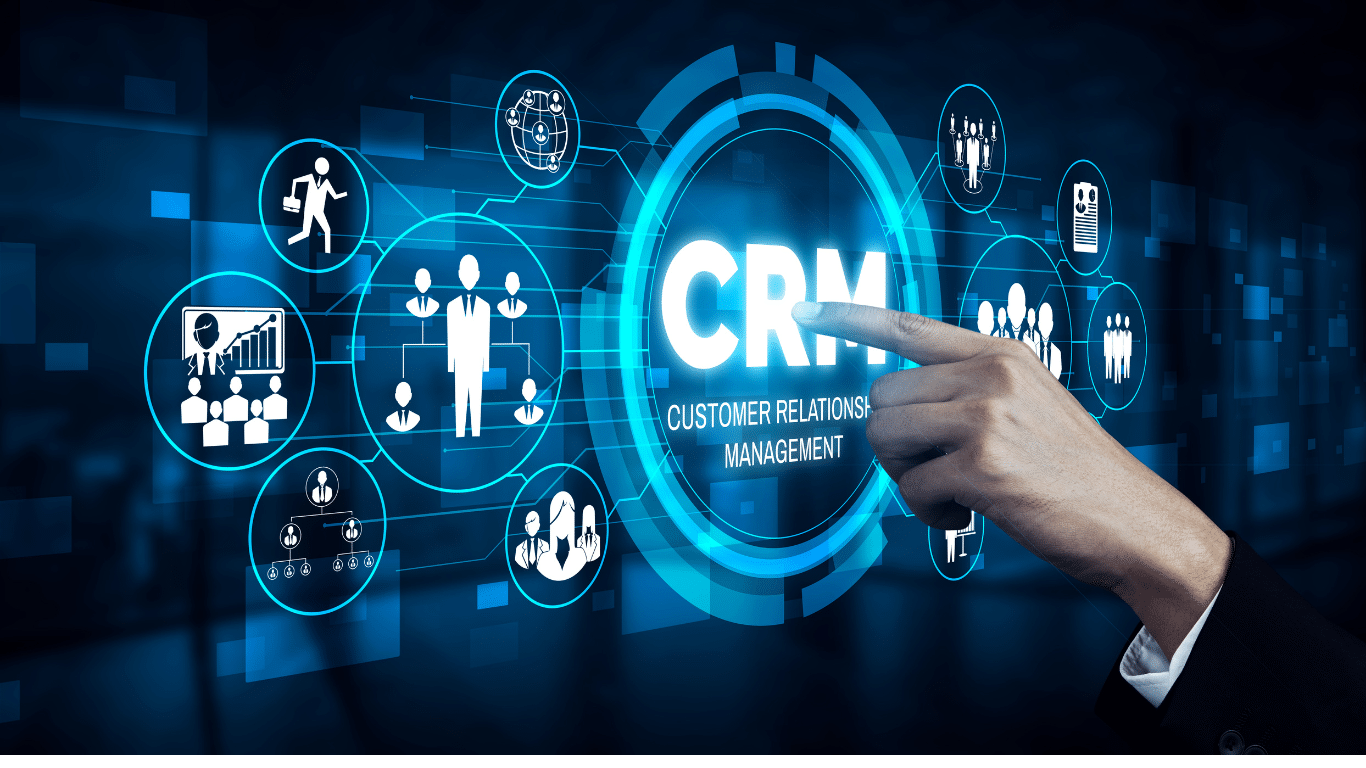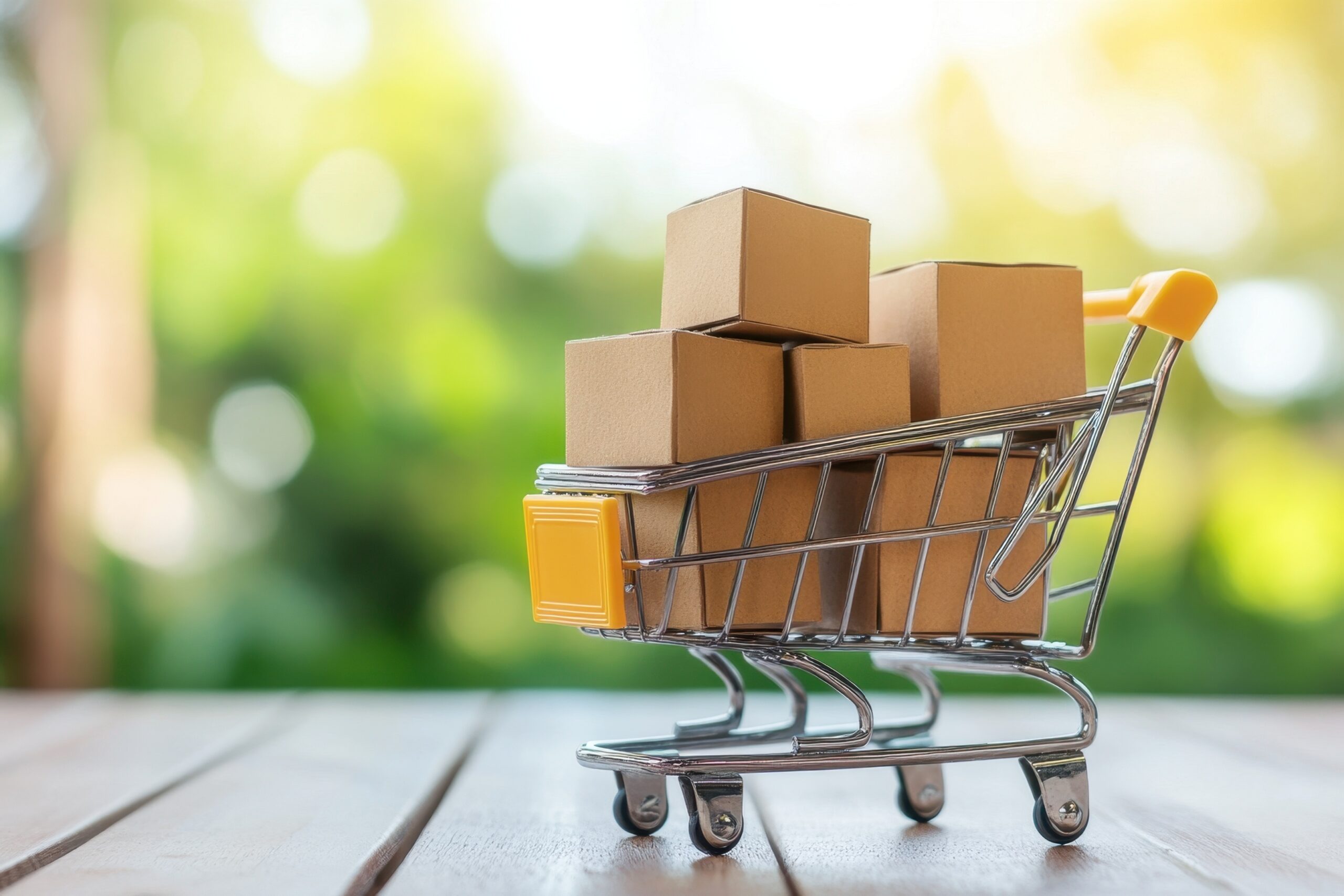60-Second Summary
Winning the Amazon Buy Box is essential for boosting sales—and it’s not just about having the lowest price. This guide outlines 7 proven strategies sellers are using right now to dominate the Buy Box in 2025. Learn the exact steps to improve your chances, increase conversions, and stay ahead of algorithm changes.
Introduction
The Amazon Buy Box is the golden ticket of eCommerce. That small “Add to Cart” button on the right side of a product page accounts for approximately 82% of all Amazon sales. If you’re not winning the Buy Box, you’re essentially invisible to most customers—even if you’re selling the exact same product as your competitors.
But here’s what many sellers get wrong: winning the Buy Box isn’t simply about undercutting everyone on price. Amazon’s algorithm considers dozens of factors, from your fulfillment method to your seller performance metrics, when deciding who gets that coveted placement.
In this comprehensive guide, we’re breaking down 7 proven strategies that successful Amazon sellers are using right now to consistently win the Buy Box in 2025. These aren’t theoretical tips—they’re battle-tested tactics backed by real performance data and Amazon’s own best practices.
Strategy 1: Use FBA or Seller Fulfilled Prime for Fast, Reliable Fulfillment
Why This Matters: Amazon’s algorithm heavily favors Prime-eligible listings. According to Amazon Seller Central data, FBA sellers win the Buy Box approximately 3-5 times more often than FBM (Fulfillment by Merchant) sellers, even when pricing is identical.
The Data Behind It:
- FBA listings show the Prime badge, which customers trust
- Amazon guarantees 2-day (or faster) shipping with FBA
- Prime members specifically filter for Prime-eligible products
- Fulfillment reliability directly impacts Buy Box eligibility
Action Steps:
- Enroll in FBA for your top-selling SKUs. The upfront cost is offset by increased Buy Box win rates and conversion rates. Learn more about the pros and cons of Amazon FBA to make an informed decision.
- Consider Seller Fulfilled Prime (SFP) if you have robust logistics and want to maintain control over fulfillment while still earning the Prime badge.
- Maintain inventory across multiple fulfillment centers. Use Amazon’s Inventory Placement Service to ensure your products are distributed regionally, reducing delivery times.
Bonus Tip: During peak seasons (Q4, Prime Day), keep at least 30-60 days of safety stock in FBA to avoid stockouts that could cost you the Buy Box. Check out our Prime Day repricing strategy guide for seasonal planning tips.
Strategy 2: Automate Pricing with a Repricer Tool
Why Dynamic Pricing Wins: The Buy Box rotates constantly—sometimes every few minutes—based on real-time pricing changes from competitors. Manual repricing simply can’t keep up with this velocity.
How Repricing Tools Work: Automated repricers monitor competitor prices 24/7 and adjust your pricing within parameters you set. This keeps you competitive without constantly undercutting yourself into unprofitability.
Understanding repricing strategies is crucial for maintaining profitability while staying competitive. The right repricing approach can help you maximize both your Buy Box win rate and your profit margins simultaneously.
Top Features to Look For:
- Real-time competitor monitoring
- Min/max price guardrails to protect margins
- Buy Box-focused repricing algorithms
- Multi-channel support (if you sell on other platforms)
Pro Tip: Set your repricer to prioritize Buy Box win rate over lowest price. A repricer that drops your price to $0.01 below the competition might win short-term, but it erodes profitability. Instead, use intelligent algorithms that find the sweet spot between competitiveness and margin. Our Buy Box Threshold feature has helped sellers boost win rates by 5-10% without sacrificing profits.
Visual Insight: Sellers using Amazon repricing automation report 15-40% higher Buy Box win rates compared to manual pricing strategies, according to third-party seller surveys.
Strategy 3: Maintain Top-Tier Seller Performance Metrics
The Metrics That Matter Most: Amazon doesn’t just look at price and fulfillment—your seller performance history is a critical Buy Box factor. Here are the three metrics Amazon weighs most heavily:
- Order Defect Rate (ODR): Must stay below 1%
- Includes negative feedback, A-to-Z claims, and chargebacks
- Target: Keep ODR under 0.5% for optimal Buy Box eligibility
- Late Shipment Rate: Must stay below 4%
- Percentage of orders shipped after expected ship date
- Target: Aim for under 2%
- Pre-Fulfillment Cancel Rate: Must stay below 2.5%
- Orders cancelled before shipment
- Target: Keep under 1%
Quick Action Plan to Boost Your Metrics:
- Monitor your Performance Dashboard daily in Seller Central
- Respond to customer issues within 24 hours to prevent negative feedback
- Use shipping templates to set realistic delivery expectations
- Automate order processing to eliminate human error in fulfillment
- Address negative feedback immediately—Amazon allows sellers to request removal of feedback that violates Amazon’s Community Guidelines
Reality Check: Even one or two bad reviews or claims can tank your metrics if your order volume is low. For new sellers with fewer than 100 orders, maintaining perfect performance is critical.
Strategy 4: Stay In Stock—Inventory Health Directly Impacts Buy Box Eligibility
The Stockout Penalty: Running out of inventory doesn’t just mean lost sales—it actively damages your Buy Box eligibility. When you go out of stock, Amazon’s algorithm assumes you’re an unreliable seller and may penalize your Buy Box win rate even after you restock.
Why Inventory Consistency Matters:
- Amazon prioritizes sellers who consistently have products available
- Stockouts disrupt customer experience and hurt Amazon’s metrics
- Recovering Buy Box eligibility after a stockout can take days or weeks
Inventory Management Best Practices:
For FBA Sellers:
- Use Amazon’s Inventory Performance Index (IPI) to track health
- Maintain at least 30-60 days of stock during normal periods
- Increase to 90-120 days before Q4 and peak seasons
- Set up automated restock alerts in Seller Central
For FBM Sellers:
- Use third-party inventory forecasting tools (like RestockPro or SoStocked)
- Enable “out of stock” notifications to pause listings gracefully
- Consider drop-shipping partnerships as backup for popular SKUs
Tools That Help:
- Amazon’s Restock Inventory tool
- Inventory management software like SellerActive or Forecastly
- Integration with your supplier’s inventory system for real-time visibility
Pro Tip: If you anticipate a stockout, consider temporarily raising your price to slow sales velocity rather than going completely out of stock. This preserves your Buy Box eligibility better than a hard stockout. Learn more about seasonal pricing strategies for inventory management.
Strategy 5: Optimize Your Landed Price (Not Just Your List Price)
Understanding Landed Price: Your “landed price” is the total cost a customer pays, including the item price plus shipping. Amazon’s Buy Box algorithm evaluates landed price, not just your list price—meaning a higher-priced item with free shipping can beat a lower-priced item with high shipping costs.
Why This Strategy Works:
- Customers compare total out-of-pocket cost
- Free shipping psychologically converts better
- Amazon Prime conditioning has made customers expect free/low shipping
Pricing Strategy Examples:
| Seller | Item Price | Shipping | Landed Price | Buy Box Winner? |
| Seller A | $29.99 | $5.99 | $35.98 | No |
| Seller B | $34.99 | Free | $34.99 | Yes |
| Seller C | $32.99 | $1.99 | $34.98 | Maybe* |
*Seller C might rotate in the Buy Box occasionally, but Seller B’s “Free Shipping” badge gives a conversion advantage.
Optimization Tips:
- Test free shipping vs. built-in shipping costs and track conversion rates
- Use Amazon’s shipping templates to offer competitive rates based on customer location
- Factor shipping into your profit calculations when setting minimum prices
- For FBA sellers: Your landed price includes FBA fees, so optimize product dimensions and weight to reduce costs
To dive deeper into pricing psychology and strategy, explore our comprehensive guide on eCommerce pricing strategies that can boost your profitability.
External Resource: The US Postal Service Commercial Pricing offers competitive rates through Commercial Plus Pricing for high-volume FBM sellers, which can help you offer lower shipping costs without eating into margins.
Strategy 6: Improve Your Order Handling Time
Speed = Trust: In Amazon’s eyes, fast order processing signals reliability. The faster you can process and ship orders, the more Amazon trusts you with the Buy Box.
Why Handling Time Matters:
- Customers want their products fast
- Shorter handling time = shorter delivery estimate = higher conversion
- Amazon rewards sellers who consistently ship quickly
FBM Sellers: This Is Your Competitive Edge
While you can’t match FBA’s infrastructure, you can optimize handling time to compete more effectively:
- Set realistic handling times in your shipping templates (1-2 days is ideal)
- Ship same-day or next-day whenever possible to exceed expectations
- Use shipping automation software (ShipStation, ShippingEasy) to print labels and confirm shipments instantly
- Integrate with your warehouse or 3PL to eliminate manual delays
- Pre-pack your top-selling items to reduce fulfillment time
Tracking Your Performance: Check your “Average Time to Ship” metric in Seller Central’s Performance Dashboard. Aim to beat your stated handling time by at least 50% of the time to build a cushion for unexpected delays.
Pro Tip: If you’re consistently shipping faster than your stated handling time, reduce your handling time setting in your shipping templates. This improves your delivery estimates and makes you more competitive in the Buy Box. Consider implementing dynamic pricing strategies that account for fulfillment speed advantages.
Strategy 7: Leverage Brand Registry and Listing Ownership
Why Brand Owners Have an Edge: If you’re enrolled in Amazon Brand Registry, you have significantly more control over your listings—and that translates directly to better Buy Box performance.
Brand Registry Benefits for Buy Box:
- Listing Control: You can edit and optimize your content without competitor interference
- Enhanced Content: A+ Content and Enhanced Brand Content improve conversion rates
- Protection from Hijackers: Prevent unauthorized sellers from listing on your ASINs
- MAP Policy Enforcement: Control pricing to prevent race-to-the-bottom scenarios
Building a strong brand presence on Amazon goes beyond just Buy Box control. Learn how to build brand loyalty through Amazon Stores, A+ Content, and customer reviews.
Case Study: Brand Owner Reclaims Buy Box Control
Scenario: A supplement brand was losing the Buy Box to unauthorized resellers who were undercutting their MAP pricing by 30%. Sales dropped 40% over three months.
Solution: The brand enrolled in Brand Registry, identified unauthorized sellers, issued cease-and-desist notices, and used Amazon’s Brand Gating to remove violators. They implemented a repricer to stay competitive with authorized resellers.
Result: Within 60 days, the brand reclaimed 85% Buy Box ownership and sales recovered to 120% of previous levels.
Action Steps for Brand Owners:
- Enroll in Amazon Brand Registry if you own a trademark
- Use transparency codes or Project Zero to combat counterfeits
- Set and enforce MAP policies with your distributors
- Report violations through Brand Registry’s reporting tools
- Consider Amazon Brand Gating to pre-approve all sellers of your products
For more information on protecting your brand on Amazon, visit the official Amazon Brand Registry documentation at Amazon Brand Services. You can also explore our guide on building your brand online for comprehensive strategies.
Common Mistakes That Kill Your Buy Box Chances
Even if you’re doing most things right, these critical errors can sabotage your Buy Box eligibility:
❌ Pricing Errors
- Setting min/max prices too wide in your repricer, allowing unprofitable wins
- Forgetting to adjust prices for seasonal demand changes
- Not accounting for landed price (item + shipping)
Conduct regular competitor price analysis to ensure your pricing strategy remains competitive and profitable.
❌ Poor Customer Feedback Management
- Ignoring negative feedback instead of requesting removal when appropriate
- Not proactively reaching out to resolve issues before they become claims
- Failing to monitor feedback score weekly
❌ Unoptimized Shipping Settings
- Setting handling time longer than necessary “just to be safe”
- Using slow shipping methods to save $0.50 per order
- Not offering tracking on all shipments
❌ Inventory Mismanagement
- Running frequent stockouts on high-velocity SKUs
- Overstocking slow movers and paying long-term storage fees
- Not using Amazon’s Inventory Performance Index recommendations
❌ Listing Quality Issues
- Incomplete or low-quality product images
- Missing or poorly written bullet points and descriptions
- Incorrect categorization affecting discoverability
Learn how to optimize your Amazon listings for higher conversion rates to improve your overall performance.
Checklist: Are You Losing the Buy Box Because Of…
- Higher total landed price than competitors?
- Order Defect Rate above 0.5%?
- Frequent stockouts in the past 30 days?
- Handling time longer than 2 days?
- Not using FBA or SFP?
- Manual pricing instead of automated repricing?
- Late shipment rate above 2%?
If you checked any of these boxes, prioritize fixing those issues immediately.
FAQs
How often does the Buy Box update?
The Buy Box can change multiple times per hour—or even within minutes—based on real-time factors like pricing changes, inventory levels, and seller performance. This is why automated repricing tools are so valuable for staying competitive. Download our complete guide to repricing to understand the mechanics.
Do I need to have the lowest price to win the Buy Box?
No. While competitive pricing matters, Amazon’s algorithm weighs many factors including fulfillment method, seller metrics, and shipping speed. A seller with FBA and excellent metrics can win the Buy Box at a higher price than an FBM seller with poor performance—sometimes by $2-5 or more.
Can new sellers win the Buy Box?
Yes, but it’s more challenging. New sellers need to focus on building excellent performance metrics quickly. Using FBA significantly improves your chances as a new seller. Start with lower-competition products, maintain perfect metrics, and gradually scale into more competitive categories.
What if my Buy Box percentage is dropping?
First, check your Performance Dashboard for any metric violations. Then review your pricing competitiveness using tools like Keepa or CamelCamelCamel to see competitor price history. Finally, ensure you’re in stock and your listings are fully optimized. If metrics and pricing look good, the issue may be increased competition—consider expanding to new products or improving your value proposition.
Does having more seller feedback help win the Buy Box?
Yes, but there’s a threshold effect. Having 100+ positive feedback with a 95%+ rating provides significant advantage over sellers with less feedback. However, going from 1,000 to 10,000 feedback has diminishing returns. Focus on maintaining excellent feedback quality rather than pure quantity.
What happens when my Buy Box is suppressed?
Buy Box suppression occurs when Amazon temporarily removes the Buy Box from your listing, often due to pricing issues or policy violations. Learn how to handle Amazon Buy Box suppression and implement corrective strategies quickly.
Final Thoughts: Winning the Buy Box Is a System, Not a Hack
The Amazon Buy Box isn’t won by a single trick or shortcut—it’s earned through consistent excellence across multiple operational areas. The seven strategies we’ve covered aren’t isolated tactics; they work together as an integrated system.
Your 30-Day Buy Box Action Plan:
Week 1: Audit your current performance metrics and address any issues
Week 2: Implement or optimize your repricing strategy
Week 3: Improve fulfillment speed and optimize landed pricing
Week 4: Monitor results and refine based on data
Remember: Amazon’s algorithm is constantly evolving, but the core principles remain consistent—provide excellent customer experience, competitive pricing, and reliable fulfillment. Master these fundamentals, and the Buy Box will follow.
Ready to take your Amazon selling to the next level? Explore our collection of best tools and services for selling on Amazon to build your complete seller toolkit. If you’re also considering expanding beyond Amazon, we have resources to help you develop a multi-channel strategy.
Start with the strategy that will have the biggest impact on your business, implement it thoroughly, then move to the next. Incremental improvements compound into significant competitive advantages.





